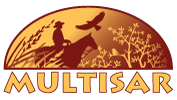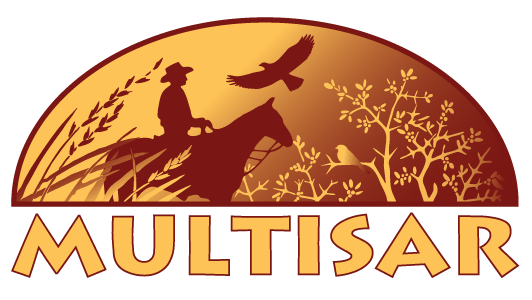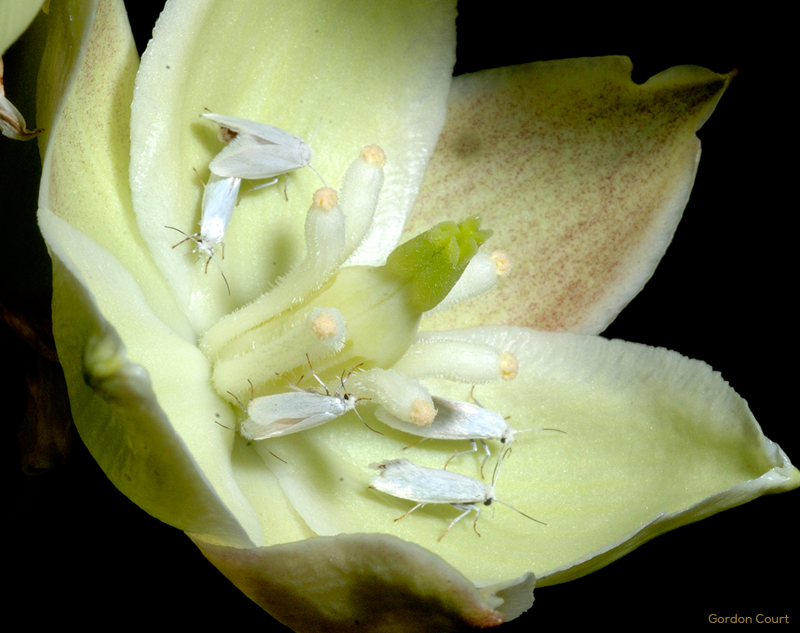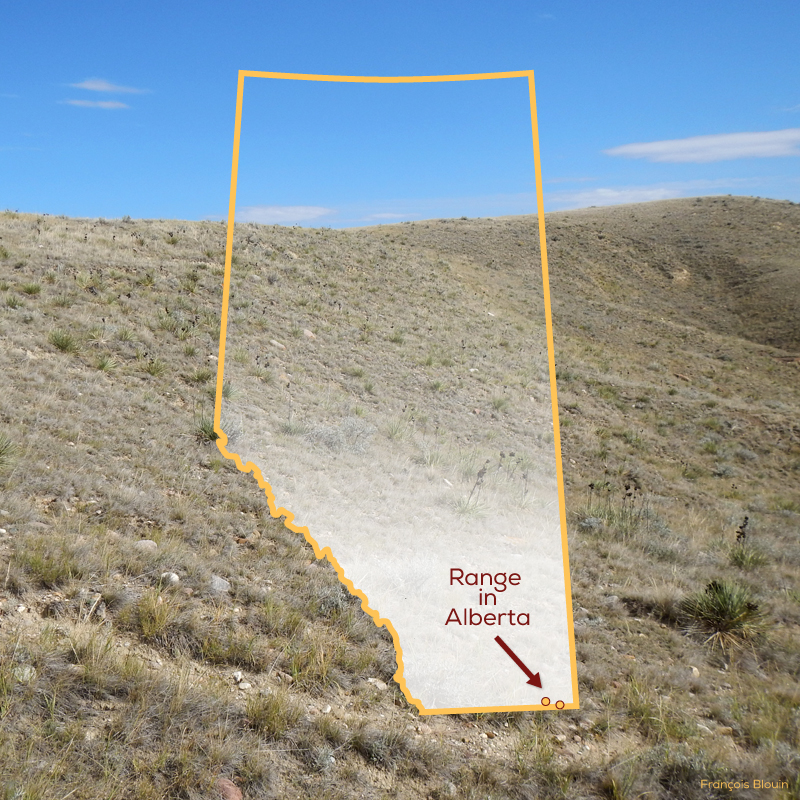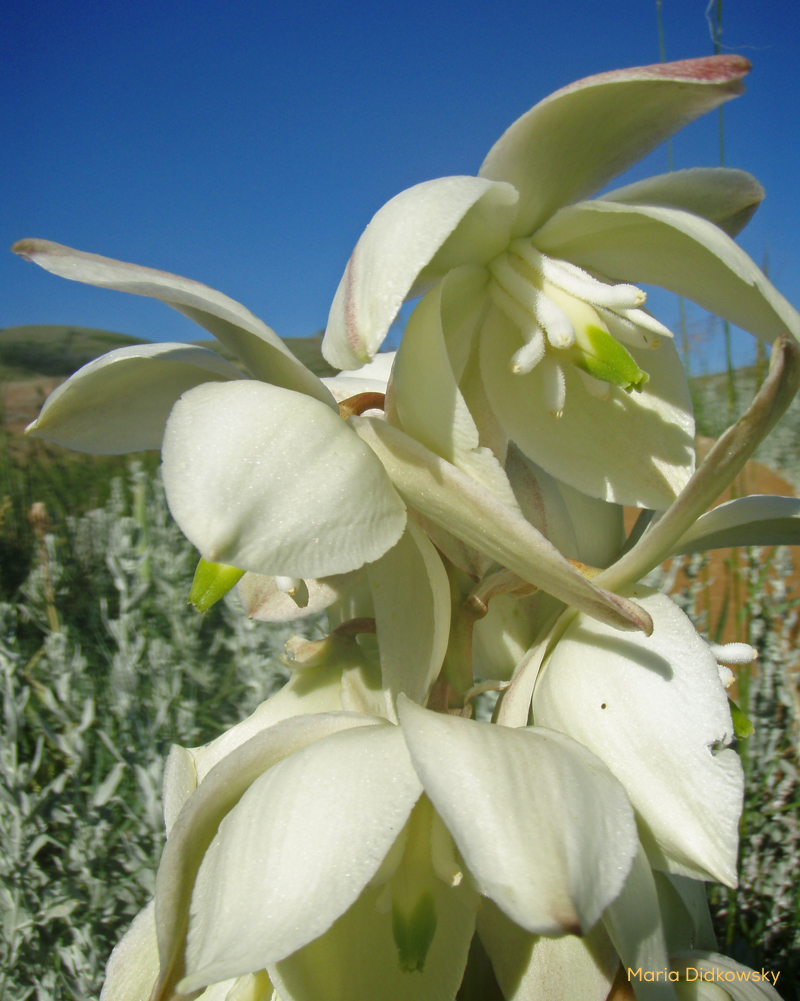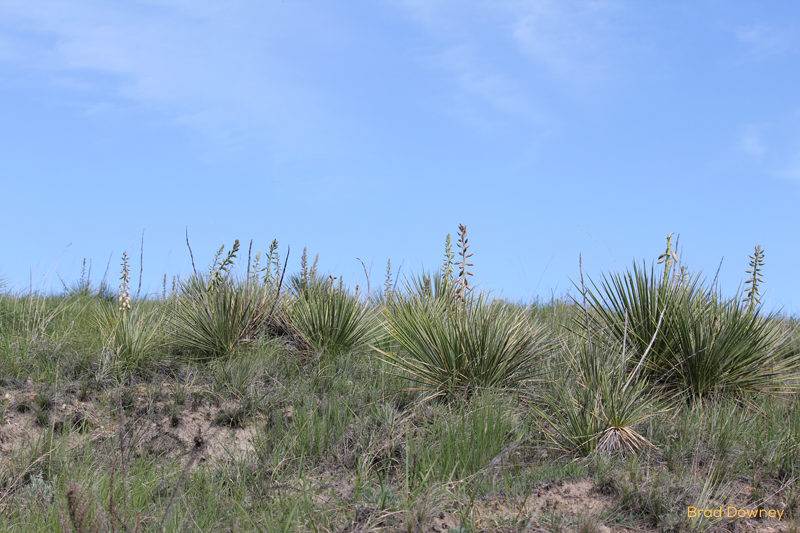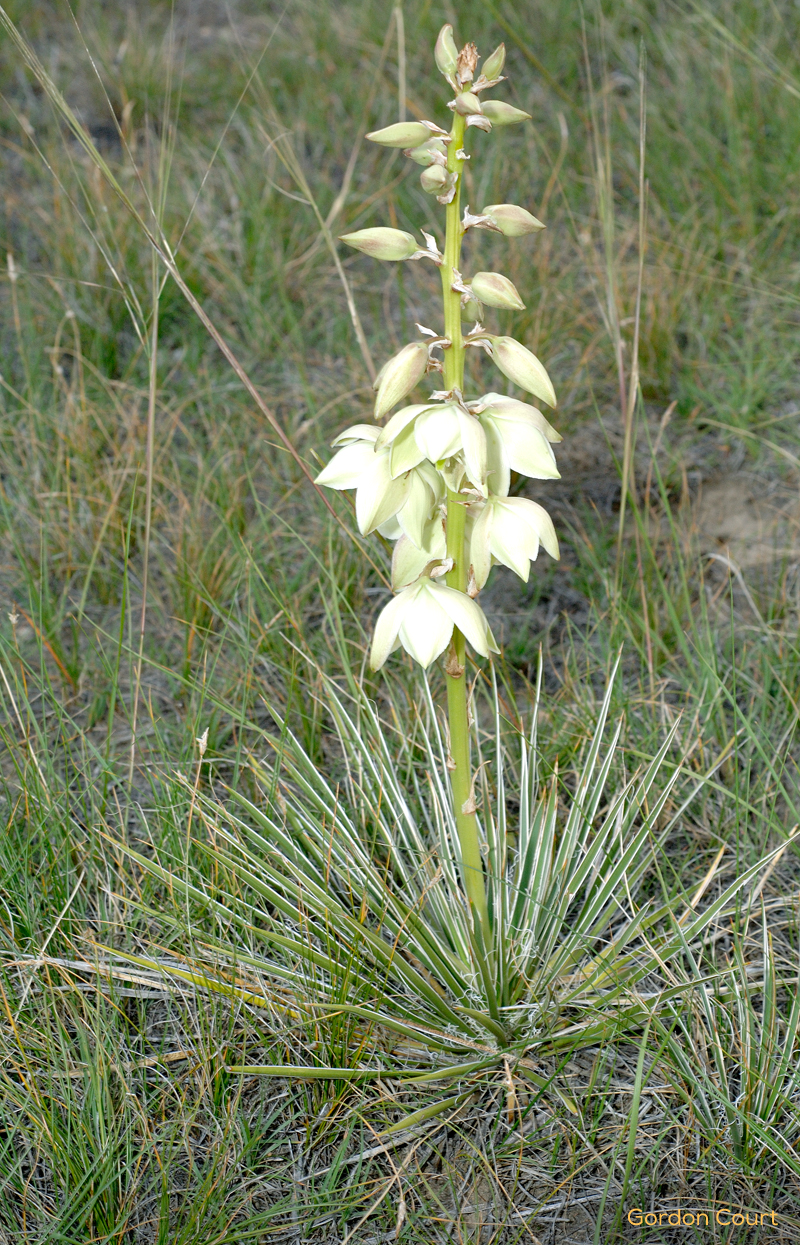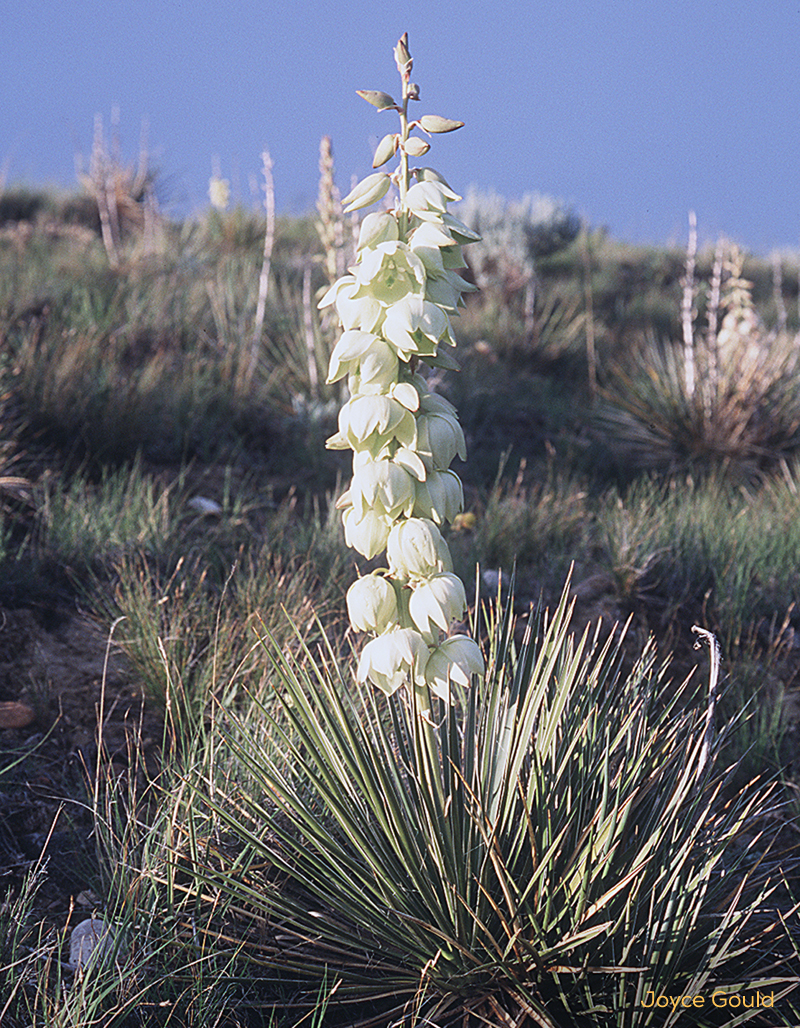Soapweed and Yucca Moth
Yucca glauca (Soapweed) and Tegeticula yuccasella (Yucca Moth)
Habitat:
Soapweed plants grow on dry eroding south or east facing slopes with sparse vegetation. Yucca Moths are found within the vicinity of stands of Soapweed plants.
Foamy Roots
The plant is called Soapweed because of the high concentration of saponins in their roots. Saponins are chemicals that foam when mixed with water and are used in soaps.
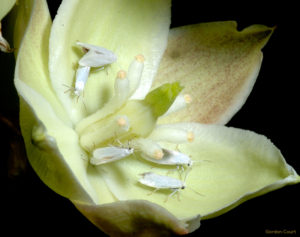
Soapweed and yucca moths need each other to survive.
Co-dependants
The lifecycles of Soapweed and the Yucca Moth are closely entwined and they need each other to survive. Soapweed requires the Yucca Moth to pollinate it so that it can produce fruit and seeds. Yucca Moths lay their eggs in Soapweed flowers and the caterpillars hatch in the seed pods and feed on the developing seeds. They eventually chew their way out of the seed pod, spin a silk line to the ground and burrow into the soil where they spin their cocoon and pupate. Not all of the seeds are eaten by the caterpillar, so that the plant can still reproduce.
Timing is Everything
Soapweed plants take 15-20 years to mature and only produce their dramatic flower spikes every two to three years. If pollinated, they produce seeds that are viable for only one year.
Yucca Moth cocoons remain in the soil for one to four years. When the adult moths emerge, they live for about four days and must mate and lay their eggs during that time to ensure their continued existence.
Both species are at the northern limit of their range in Alberta. As neither the flowering of the Soapweed plants nor the emergence of the moths is a sure thing in any given year, the survival of both species in Alberta is an extremely impressive feat.
Hitching a Ride
Two other moth species rely on Soapweed to complete their lifecycle – the Non-pollinating Yucca Moth and the Five-spotted Bogus Yucca Moth. They do not pollinate the flowers. Both species are present in Alberta’s Soapweed patches.
Population
There are only two known natural populations of Soapweed and Yucca Moths in Alberta, both in the Milk River Watershed, on public (crown) land. These populations represent the northern limit of their range in North America.
A survey in 1998 found 28,174 Soapweed plants (from 8499 clones) at one site and 1,383 plants (from 404 clones) at the other site. A census in 2004 found additional plants at the less populated site. Yucca Moths exist at both sites, but are less numerous and more sporadic at the site with fewer plants.
Current Threats
- Grazing of flower stalks by wildlife (mostly Pronghorn and Mule Deer) and cattle. Both sites are being managed to reduce the chance of cattle consuming the flower stalks.
- Lack of disturbance, such as fire, to create bare ground suitable for the plants to spread and establish new populations.
- Wind storms that remove flowers and fruit.
- Other insects can affect seed production. Ants cause damage to flower buds, causing them to fall off before they flower. The Non-pollinating Yucca Moth competes with the Yucca Moth, as its caterpillar also eats Soapweed seeds.
Species@Risk Quiz
Test your knowledge about Alberta’s grassland species at risk
Soapweed and Yucca Moth
Question 1 |
The plant was named Soapweed because:
The roots contain saponins that create a soap-like foam
| |
The flowers are used to scent soaps | |
The flowers are shaped like soap dishes |
Question 2 |
Soapweed is in the same family as:
Bear Grass
| |
Prickly Pear Cactus | |
Joshua Trees |
Question 3 |
Yucca moth caterpillars only eat:
Soapweed roots
| |
Soapweed seeds | |
Soapweed leaves |
Question 4 |
Yucca moths pupate in the:
Soil
| |
Soapweed flowers | |
Soapweed roots |
Public
- Visit the Soapweed and Yucca Moth display at the Etzikom Museum and Historical Windmill Centre on Highway 61, near Foremost, in southern Alberta.
- Purchase Soapweed only from reputable horticultural centres.
- Support native grassland habitat by choosing grass-fed meat in the grocery store.
- Voice your support for native grassland conservation with your political leaders.
- Educate yourselves and your family about Soapweed and the Yucca Moth and their role in the grassland ecosystem.
Landowners
- Both populations of Soapweed and Yucca Moths occur on public (crown) land. If you find Soapweed on your land, please contact your local Environment and Parks Biologist as this may be a new site in Alberta.
What MULTISAR Does
- Supports the Soapweed and Yucca Moth display at the Etzikom Museum and Historical Windmill Centre.
- Reports Soapweed seed set and Yucca Moth activity when conducting surveys in their habitats.
- Provides information about Soapweed and Yucca Moth.
